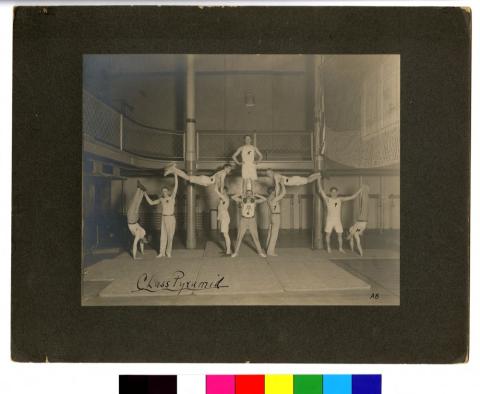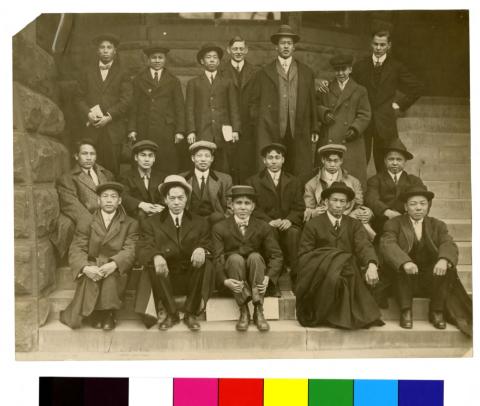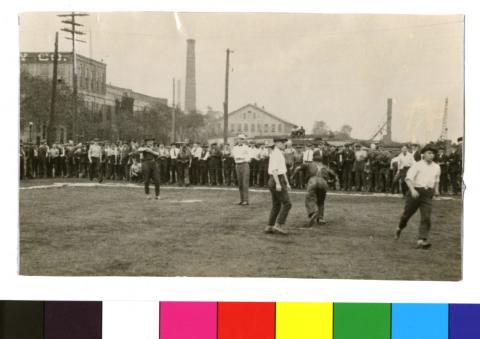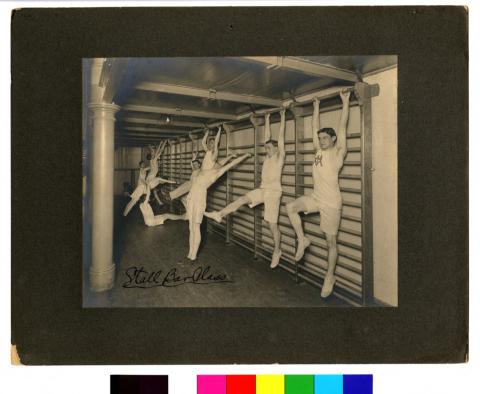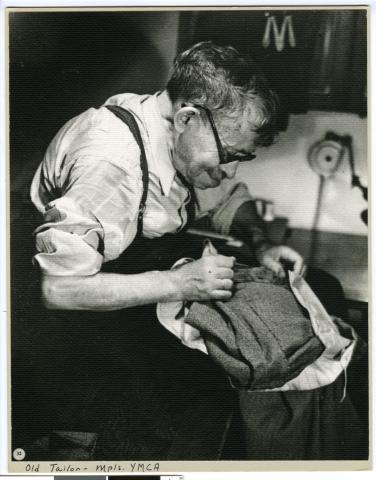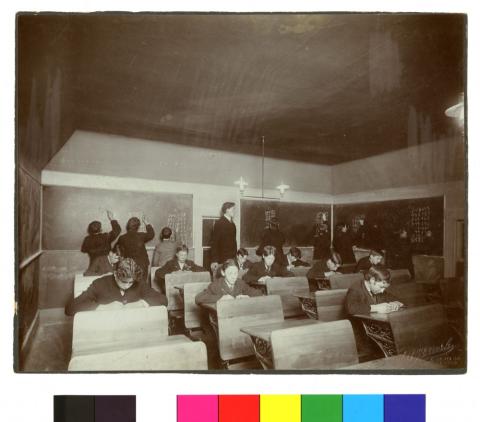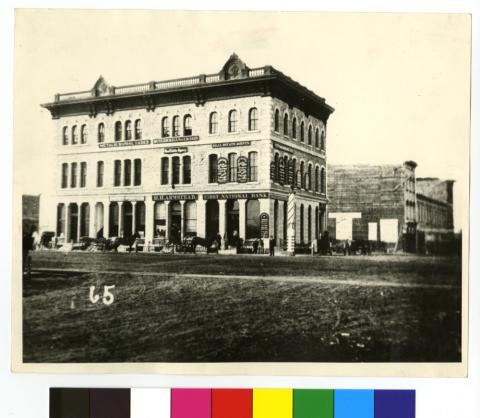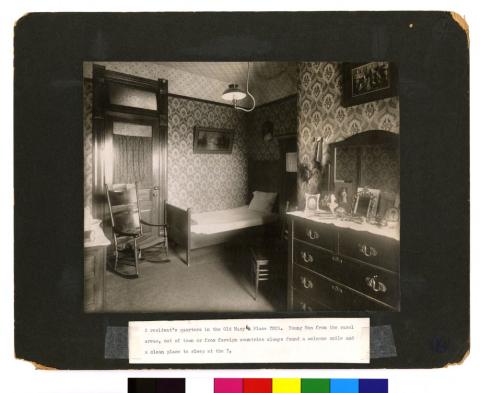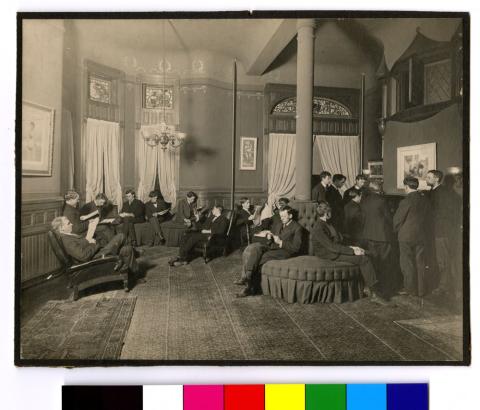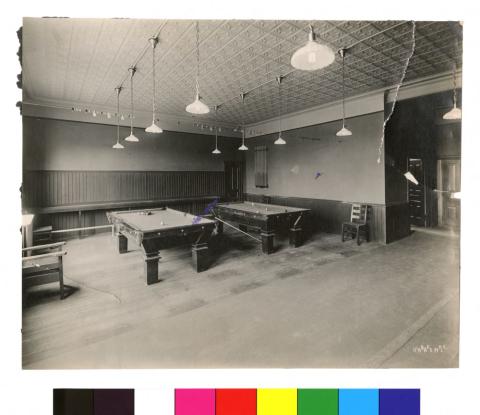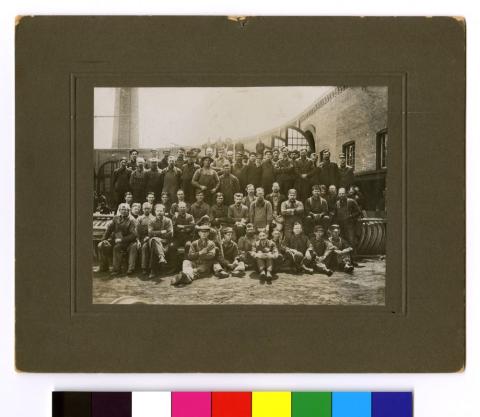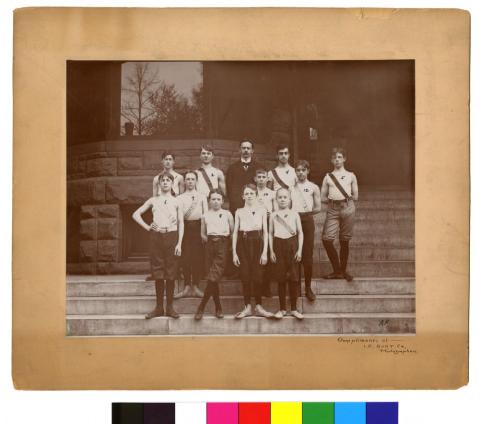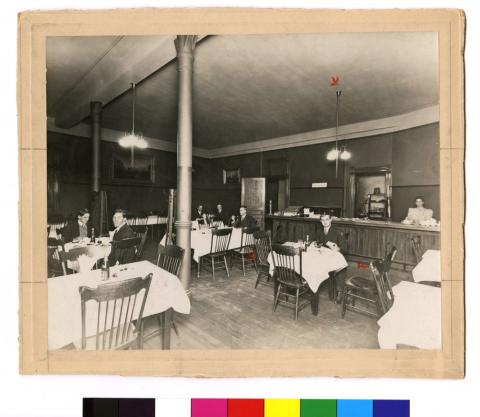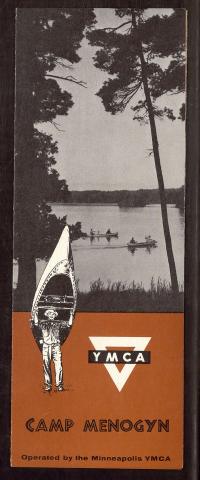Primary Source Set
by Grace Onsrud, Minnesota Digital Library Volunteer
Immigration and Ethnicity Social Issues Sports and Recreation
The YMCA was founded in 1844 in London as the Young Men’s Christian Association, an organization that sought to encourage Christian values and enrich the spiritual lives of young men working in trades. The idea of the YMCA soon spread beyond London, and branches formed in different parts of the world.
The first YMCAs in Minnesota were founded in Saint Paul in 1856 and in Minneapolis in 1866. By the late nineteenth century, YMCAs had expanded their offerings beyond their religious focus. Many YMCAs had programs related to education, physical fitness, and recreational activities. The first YMCA building in Minneapolis opened in 1892 at Tenth Street and Mary Place. The Minneapolis YMCA had exercise equipment, a restaurant, and lodging. It hosted fitness classes, night classes for working boys, and English classes for new immigrants.
The Minneapolis YMCA also established wilderness camps to promote an appreciation for the outdoors as well as leadership skills. Camp Menogyn was founded near Grand Marais in 1922 and is still in operation today. The camp is a starting point for canoeing and camping trips in the boundary waters, which initially included only boys and young men. The first Camp Menogyn trip to include girls was in 1968. By the end of the 1970s, all of the Minneapolis YMCA camps were open to girls.
In 2012, the Minneapolis and Saint Paul YMCAs merged to become one of the largest YMCA associations in the country. The YMCA of the North continues to support communities through fitness classes, child care, community outreach, and more.
Discussion Questions & Activities
- Notice the different activities shown in the primary sources. What kinds of activities are people doing? How does this compare to the ways people use the YMCA today?
- YMCAs were initially only open to men, and they focused on promoting Christian values. How might this have influenced the kinds of activities and facilities the YMCA offered?
- Looking at the sources, what are some examples of how the YMCA adapted over time to the changing needs of its community?
- Why do you think the YMCA started wilderness camps for young people? How did that align with its mission and other activities?
- Why do you think the YMCA offered classes for immigrants? How did that align with its mission and other activities?
eLibrary Minnesota Resources (for Minnesota residents)
"Exercise." Britannica School, Encyclopædia Britannica, 21 Apr. 2023. Accessed 10 Oct. 2025.
Peterson, Kurt W. "Muscular Christianity." St. James Encyclopedia of Popular Culture Online, Gale, 2013. Gale In Context: High School. Accessed May 15, 2024.
Winter, Thomas. "Young Men's Christian Association." Dictionary of American History, edited by Stanley I. Kutler, 3rd ed., vol. 8, Charles Scribner's Sons, 2003, pp. 584-585. Gale In Context: High School. Accessed May 15, 2024.
"YMCA." Britannica Academic, Encyclopædia Britannica, 15 Jul. 2010. Accessed 10 Oct. 2025.
“YMCA Founded.” Salem Press Encyclopedia, May 2022. EBSCOhost. Accessed 10 Oct. 2025.
"Young Men’s Christian Association (YMCA)." Britannica Library, Encyclopædia Britannica, 29 Feb. 2024. Accessed May 15, 2024.
Additional Resources for Research
"Brief History." African Americans and the YMCA (Archives and Special Collections), University of Minnesota. Accessed Jun 12, 2024.
Camp Menogyn. YMCA of the Greater Twin Cities Camping records, Y.MPL.005. Kautz Family YMCA Archives. Accessed Jun 12, 2024.
“Our History.” The YMCA of the USA, 2024. Accessed Jun 10, 2024.
Weeks, Linton. "How The YMCA Helped Shape America." NPR, Jun 2, 2015. Accessed Jun 12, 2024.
“YMCA Central Building.” Minneapolis City of Lakes. Accessed Jun 12, 2024.
"YMCA of the Greater Twin Cities - Celebrating 160 Years." YMCA of the North. Accessed Jun 12, 2024.
Young Men's Christian Association of Metropolitan Minneapolis. Minneapolis YMCA Camp Menogyn, 1920s-1970s (Box 146, Folder 11). 1920 - 1979. University of Minnesota Libraries, Kautz Family YMCA Archives. Accessed Jun 20, 2024.
Published onLast Updated on
